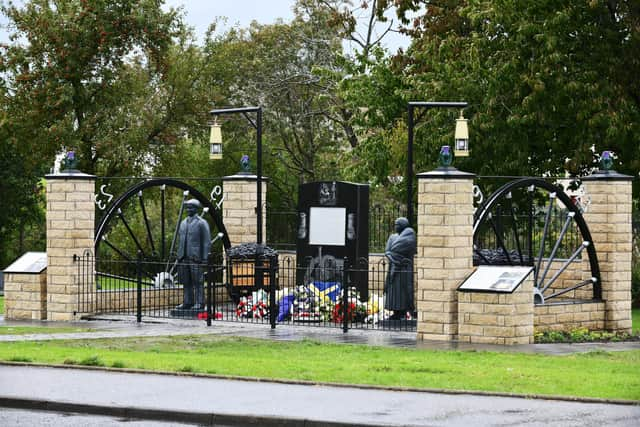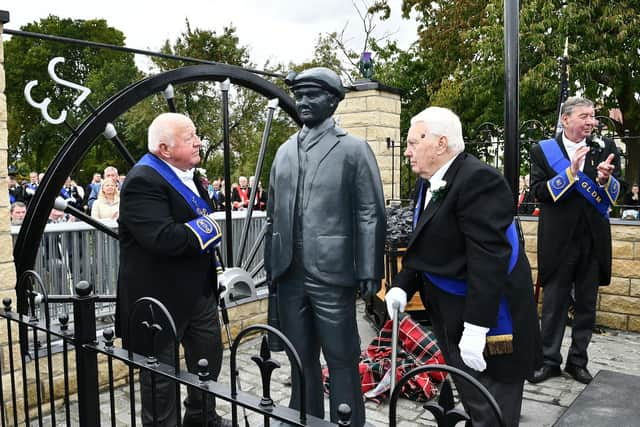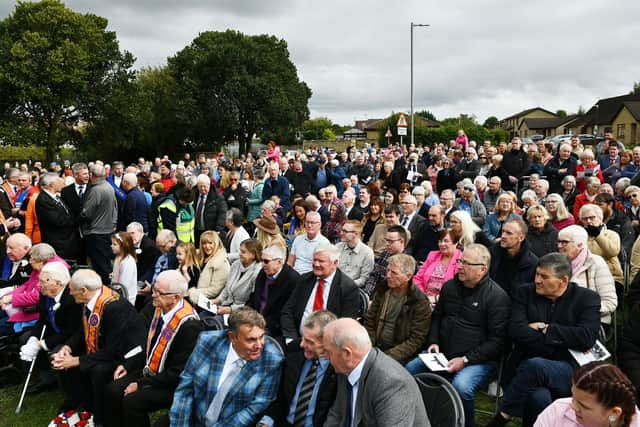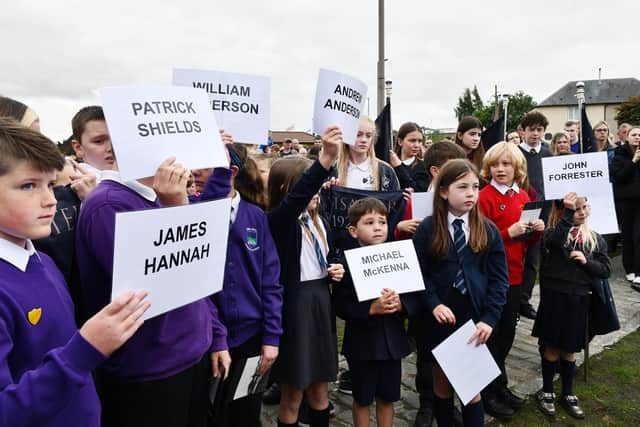Redding Pit Disaster: Remembering the 40 miners who went to work in 1923 and never returned
and live on Freeview channel 276
They came from all backgrounds and some even from overseas, but all with one thing in common, they were determined to be there to pay their respects on such a significant day.
Despite the bands playing and the flags waving, there was no forgetting that this was a solemn occasion. For a century earlier people had also gathered but this time at the nearby Redding Pit where, in the early hours of September 25, 1923, an inrush of water flooded the coal workings of No.23 pit.
Advertisement
Hide AdAdvertisement
Hide AdPeople rushed from their homes to join the rescue operation or to anxiously wait at the pithead for news of loved ones trapped below. And for some, the wait went on for 40 days before the last body was brought to the surface. Sadly for the family of James Cochrane of Redding there was to be no happy ending, instead a funeral to plan.


For those brought up in the Braes villages, the story of the Redding Pit and the 40 miners who lost their lives is one they hear from their earliest days, often told by those directly affected by the tragedy. Today’s youngsters are also told of the terrible event and of the brave acts of heroism, therefore it was fitting they should play such an important role in marking the centenary and the dedication of the new memorial.
The Sir William Wallace Free Colliers previously led the campaigns for a fitting memorial, first in 1980 and again in 2002 when the stone was refurbished. And it was they again who were determined that a more significant memorial should be installed in time for the centenary.
Five years in the planning, the original stone bearing the names of those who died is incorporated into the new memorial. It is flanked by two statues, one a miner and the other, taken from a photograph from the day of the disaster, of a local woman anxiously waiting at the pit head for news. The statues are the work of sculpture Ruth Davies and sitting behind them are coal hutches with two tall lamp posts towering over the memorial which is enclosed behind a new wall and fencing.
Advertisement
Hide AdAdvertisement
Hide AdSaturday’s dedication ceremony was preceded by the a march through the streets of the Braes villages by the Free Colliers, stopping to lay wreaths at the gutterhole from where many miners managed to reach the surface and at the site of the former pit.


Following a welcome from Grand Master William Allardyce, historian Ian Scott then gave details of what had taken place 100 years before. The memorial was then unveiled by David Chirray and Joe Hamilton.
The names of the 40 men who died were then read out by Honorary Brother and former regional councillor James Anderson, who had been supportive in getting the original memorial installed; former provosts Pat Reid and Billy Buchanan; and former MP Michael Connarty.
Alex Jack, whose grandfather James Jack was one of the five men who survived for ten days underground before being rescued then read out their names.
Advertisement
Hide AdAdvertisement
Hide AdHe later said he grew up hearing the stories of the terrible day and what the miners endured underground. He said: “This is a very special day. My brother Robert was also a Free Collier and he so wanted to be here for the centenary. Sadly we lost him two years ago but hopefully he is looking down on us and happy with what he sees today.”


The memorial was then dedicated by the Reverend Tom Greig and Father Daniel Doherty.
Wreaths and flowers were then laid with many organisations from across the community taking part, but the most poignant were those laid by relatives of the 40 men who died. Those travelling a distance included mother and daughter Pamela Wright from Texas and Helen Harnden from Ontaria in Canada. They descendants of Robert Ure one of those rescued after ten days, and believe they are also related to John Lennie Wright who died.
A lament was played by Piper Kevin McLean before readings by primary schoolchildren and a closing remarks by Provost Robert Bissett who praised all those involved for their efforts.
Advertisement
Hide AdAdvertisement
Hide AdThe vote of thanks was given by Grand Master Allardyce who thanked everyone for fulfilling the pledge made 100 years before that those who died would never be forgotten.


The list of those who died and when their bodies were recovered makes sobering reading: September 25 – Thomas Brown, John Forrester, David Porteous; October 4 – Frank McGarvie, Michael McKenna, Andrew Anderson; October 10 – William Anderson; October 13 – Patrick Shields, James Hannah, Thomas Aitken; October 14 – Thomas Thomson jnr, Thomas Kilgannan; October 18 – David Brown, Thomas Brown; October 20 – John Lennie Wright ; November 6 – Thomas Thomson, James Marrs, Laurence T Scobbie, David Thomson, Jas. Scott Irving, Alex Hamilton; November 8 – Lawrence Thomson; November 12 – William Donaldson; November 15 – Colin Maxwell snr, Thomas Bonar, John Baxter; November 20 – Walter Maxwell; November 21 – Archibald McNee, David Bennie, Robert Thomson, Andrew Brown, Henry Thomson, Robert Beveridge, John Beekman, Thomas Thomson, James Adam, Colin Maxwell jnr, Michael McLaughlin, James Jarvie, December 3 – James Cochrane.
The men who were trapped for ten days underground before being rescued were: John Miller, Robert Ure, John Donaldson, Andrew Thomson andJames Jack.
While trapped the five had nothing to eat, only brackish water to drink and no light for fear of firedamp. They were in remarkably good condition when rescued, and were sought after to speak at concerts held for the disaster relief fund.
Advertisement
Hide AdAdvertisement
Hide AdWithin days of the disaster a fund had been established by the Provost of Falkirk and the Falkirk Herald and within a year had raised over £60,000, well over £1 million at today’s values. It was used to support those affected and their dependants, and was only wound up in 1966.